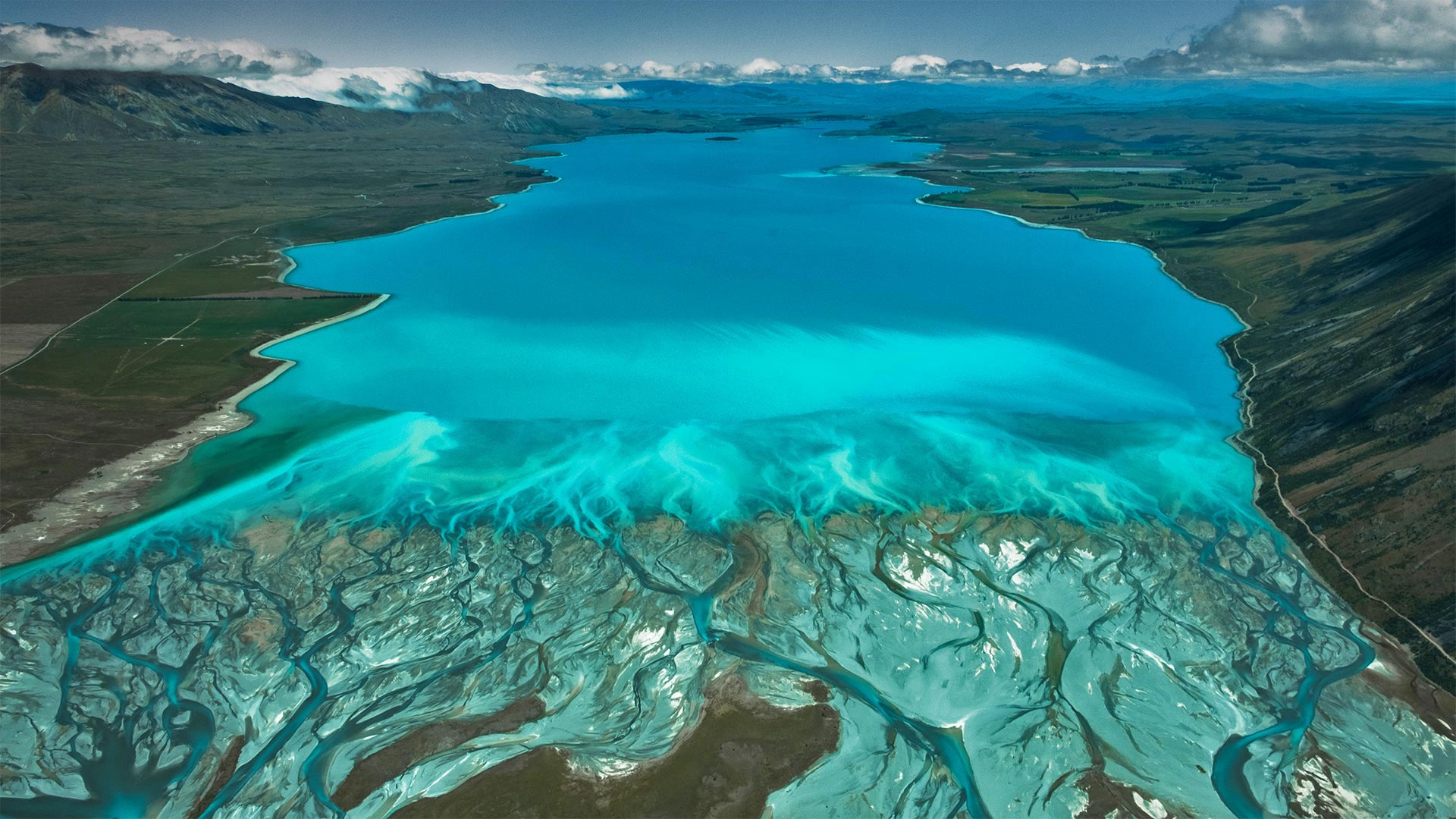以新西兰南岛奥拉基/库克山国家公园为背景的特卡波湖 Lake Tekapo with Aoraki/Mount Cook National Park in the background on New Zealand's South Island (© Sophie Dover/Getty Images) (© Sophie Dover/Getty Images)

以新西兰南岛奥拉基/库克山国家公园为背景的特卡波湖 Lake Tekapo with Aoraki/Mount Cook National Park in the background on New Zealand's South Island (© Sophie Dover/Getty Images) (© Sophie Dover/Getty Images)
蓝色新西兰 Blue Zealand
Lake Tekapo, New Zealand
The striking electric-blue waters of Lake Tekapo are caused by extremely finely ground rock particles suspended in the melted waters of glaciers in the nearby Southern Alps. Snowmelt from the range feeds two similarly stunning lakes in the Mackenzie Basin of New Zealand's South Island, Lake Pukaki and Lake Ohau, which share their neighbor's remarkable turquoise color and mountainous backdrops. New Zealand's highest peak, Aoraki/Mount Cook, reigns in Mount Cook National Park, seen in the background of this image.
The name Tekapo is a misspelling of the Māori word Takapō, which means 'to leave in haste at night.' But if you are one of the region's many visitors, you may find the nighttime even more mesmerizing than the day. Lake Tekapo is a certified Dark Sky Reserve, one of the world's largest. With night skies almost completely free of light pollution, stargazing doesn't get much more vibrant, and tours cater to manuhiri (visitors) interested in astro-tourism. If that's not reason enough to stay the night, the area's abundant skiing and fishing opportunities might be. There's certainly no need to leave in a rush.
新西兰特卡波湖
特卡波湖惊人的电蓝色海水是由悬浮在附近南阿尔卑斯山冰川融化水中的极细的岩石颗粒造成的。来自该山脉的融雪为新西兰南岛麦肯齐盆地的两个同样令人惊叹的湖泊——普卡基湖和奥豪湖提供了水源,这两个湖泊共享着其邻居引人注目的绿松石色和多山的背景。新西兰最高峰奥拉基/库克山位于库克山国家公园,如图背景所示。
Tekapo这个名字是毛利人单词Takapō的拼错,意思是“晚上匆忙离开”但如果你是该地区众多游客中的一员,你可能会发现夜间比白天更迷人。特卡波湖是世界上最大的黑天空保护区之一。由于夜空几乎完全没有光污染,观星活动也没有变得更加活跃,旅游也迎合了对天文旅游感兴趣的游客。如果这还不足以作为过夜的理由,那么该地区丰富的滑雪和钓鱼机会可能会更大。当然没有必要匆忙离开。
评论已关闭